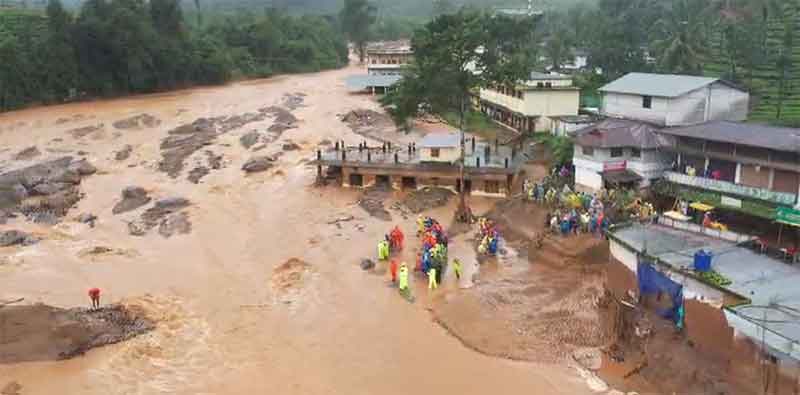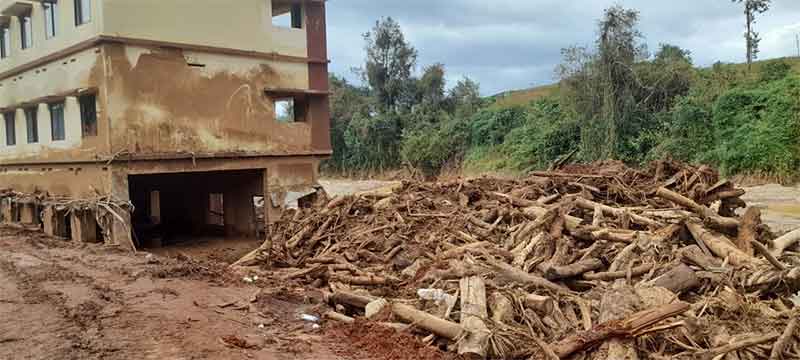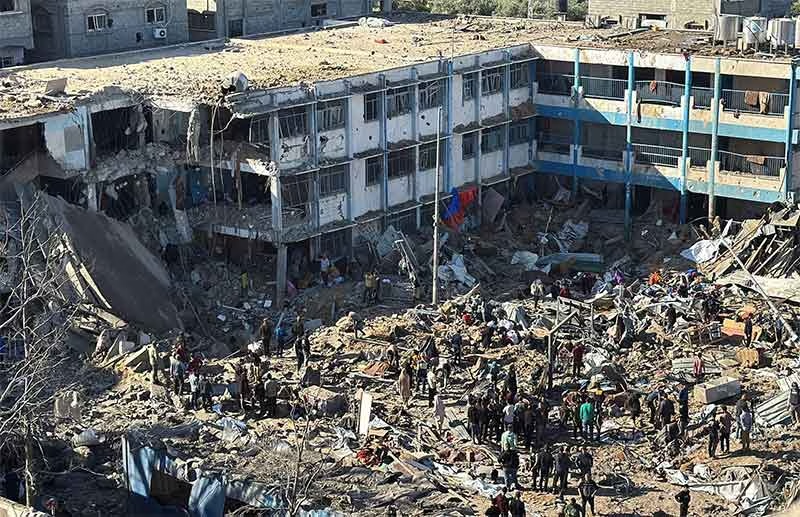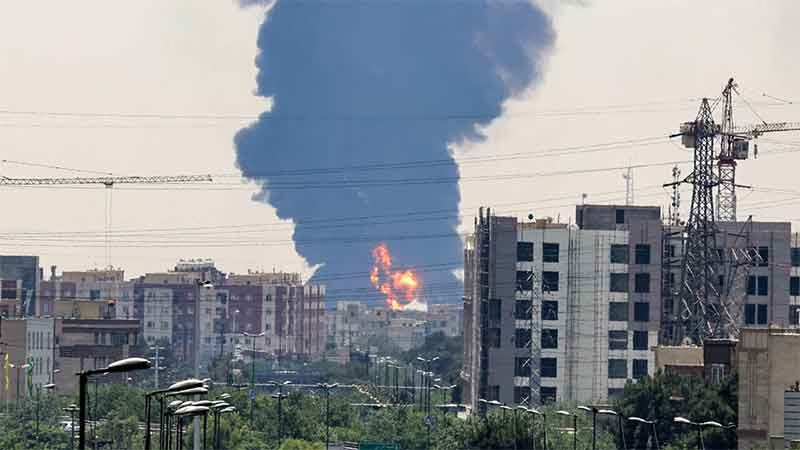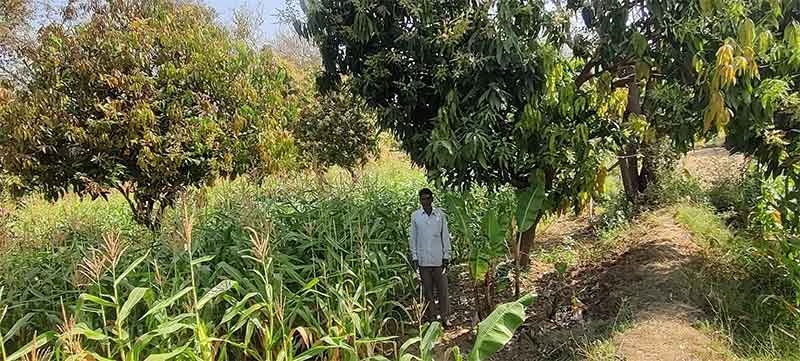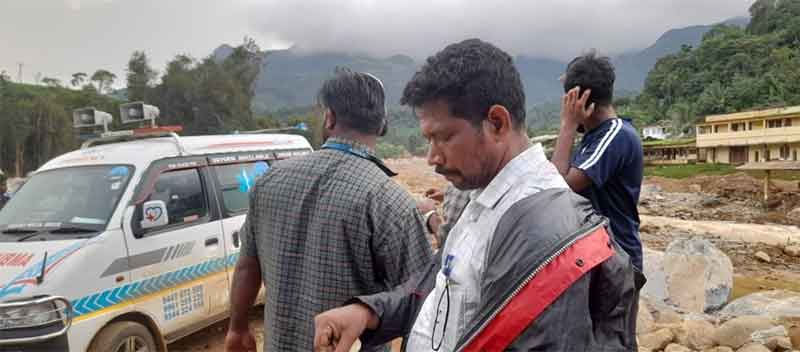
“Everyone knows everything but no one wants to say anything,” philosophized Joseph CR after witnessing the devastating landslide in Kerala’s Wayanad.
On Aug. 4, CR went near the Chempra Peak, bearing the colonial and postcolonial political and socio-cultural yoke in the mountainous northern district in the southern Indian state after the triple landslides caught three villages napping in the wee hours of July 30, claiming over 300 lives — some of them with mutilated bodies — and nearly 200 declared missing.
CR was in Mundakkai and its nearby villages of Punjirimattom, Chooralmala, and Attamala which were ravaged by consecutive landslides that hit an estimated 5,000 people. He knew many of them as a Kerala forest department staffer.
In the Meppadi forest range under the Kalpetta forest division he started his career way back in 2001. Hailing from a coastal district in central Kerala, it was a matter of time for CR to fall in love with the Ghats, a UNESCO World Heritage site with steep seaward slopes.
Located nearly 7,000 ft above sea level, wild animals like elephants and tigers have made the Chempra Peak a fertile ground, said CR about the highest peak in the Wayanad hills.
The peak’s steep slopes were once vital sources of water as they recharged surface water apart from supplying drinking water to forest dwellers and providing habitat to plant and animal life.
At the end of the Chempra Peak, there is the Ezuthachan Para (mountain) where the land survey details are inscribed on a rock by British colonial rulers.
“All beginnings have their end,” said CR while standing over the massive debris of the natural devastation.
Colonial Britain converted a large tract of forests for water-guzzling monoculture plantations during its occupation of India. Wayanad got its first plantation estate in the 1830s where (slave) workers toiled and lived in paddies (colonies) in the high altitude in the Ghats.
Forests of northern Kerala were extensively tapped by Britain to supply wooden rails, platforms and wagons for the Indian Railways which was taking shape under its colonial stewardship to ship raw materials to the UK shores.
Teak wood trees from Nilambur, a major town on the banks of the Chaliyar River that originates in the Ghats, were axed in large numbers to make ships and vessels for the British Navy after they were found superior and aided in the victory when the UK pitted against arch-rival France under Napolean Bonaparte.
Though Britain left India in 1947, they saw to it that much damage was done to the slope stability of the Western Ghats to benefit the British throne, located far away.
Backed by state support, large-scale neo-Christian migration from the southern parts of the state took place to the forests in the northern parts that include a picturesque Wayanad whose mountain ranges were brought down to house cash crops after World War I.
The trend continued after World War II when Christians in the princely state of Travancore were encouraged to migrate to the northern parts, which were then part of the British Madras province.
In their efforts to make a living out of forest lands, much ground was leveled on the Western Ghats, further denting the slope stability of the formidable mountain range, which is older than the Himalayas.
After gaining independence from an extractive Britain, India’s new rulers did not bother to look after forests as it is a state subject. Wayanad was not an exception to this undeclared state policy.
Besides, the government of India had already its fingers burnt while initiating social forestry in the evergreen forests of Wayanad under the 20-point program of the Indira Gandhi government.
With the state government, Wayanad got its worst phase. In 2006, the Kerala government widened the Thamarassery mountain pass. This expansion resulted in the loss of significant slopes with no point of return.
“This was the game changer,” observed CR.
With the spectacular rise in vehicular traffic through the mountain pass, wealthy plantations sensed the potential for tourism and they wasted no time to seize the government-given opportunity.
Influential people, including film stars and jewelers, flocked to Wayanad to own plantations. Water in the Ghats was diverted for tourism in the ecologically sensitive district to add up to the fortunes of wealthy people.
“Till 2006, there was noolmazha throughout the year except for a few days”, recalled CR, referring to the continuous rainfall that resembled threads.
Cardamom, coffee and tea are cultivated in Wayanad by plantations that need a constant supply of water. Coffee and cardamom need more water but less sunlight compared with tea estates. So, they occupy the top slot in the mountainous terrain.
There are more than 15 plantations operating in the Mundakkai forest station under the Meppadi forest range that are always on the lookout for fresh sources of water. Their location in the high altitude saves them from public scrutiny.
Though their encroachment has been brought to the attention of the concerned departments, the plantations have not bothered to return the ill-gotten land to the government, which is not keen on getting its due back.
Again, much slope was lost in the Western Ghats as the plantations are answerable to none and politicians and governments do not ask them to mend their ways as they give employment to many people.
As Wayanad witnessed a boom in real estate and tourism, locals began to play an unstinting host to visitors, including people from neighboring states of Tamil Nadu and Karnataka.
“The demography in Wayanad changed forever with the economic boom,” said CR.
The locals dreamt of a life away from plantations. In their endeavor to be modern, they built upward mobility amenities and social institutions brick by brick, further denting the slope stability.
The Western Ghats is home to over 300 globally threatened flora and fauna species and harbors more than 30 percent of all plant, fish, bird, and mammal species found in the vast South Asian nation. The slopes hold together the Ghats.
Subscribe to Our Newsletter
Get the latest CounterCurrents updates delivered straight to your inbox.
The Malabar region in northern Kerala that includes Wayanad is the prime beneficiary of the “Gulf boom” in the state. Many skyscrapers and unmindful construction activities are taking place in the region as the petrodollar still holds sway in the global market.
Mining quarries, with the nod from the government, are doing brisk business by catering to the needs of the real estate market. Less surprisingly, the fragile Wayanad district is home to many quarries.
At the Mundakkai forest station, a stone’s throw away from the place where the massive landslide occurred, a mining quarry operated, with the green light from the state government, but was forced to abandon it due to stiff opposition from the locals nearly 10 years ago. However, the damage was done.
There is only one way left before Wayanad.
“Reforest,” succinctly said CR.
Joseph Benny is a journalist from Kerala


